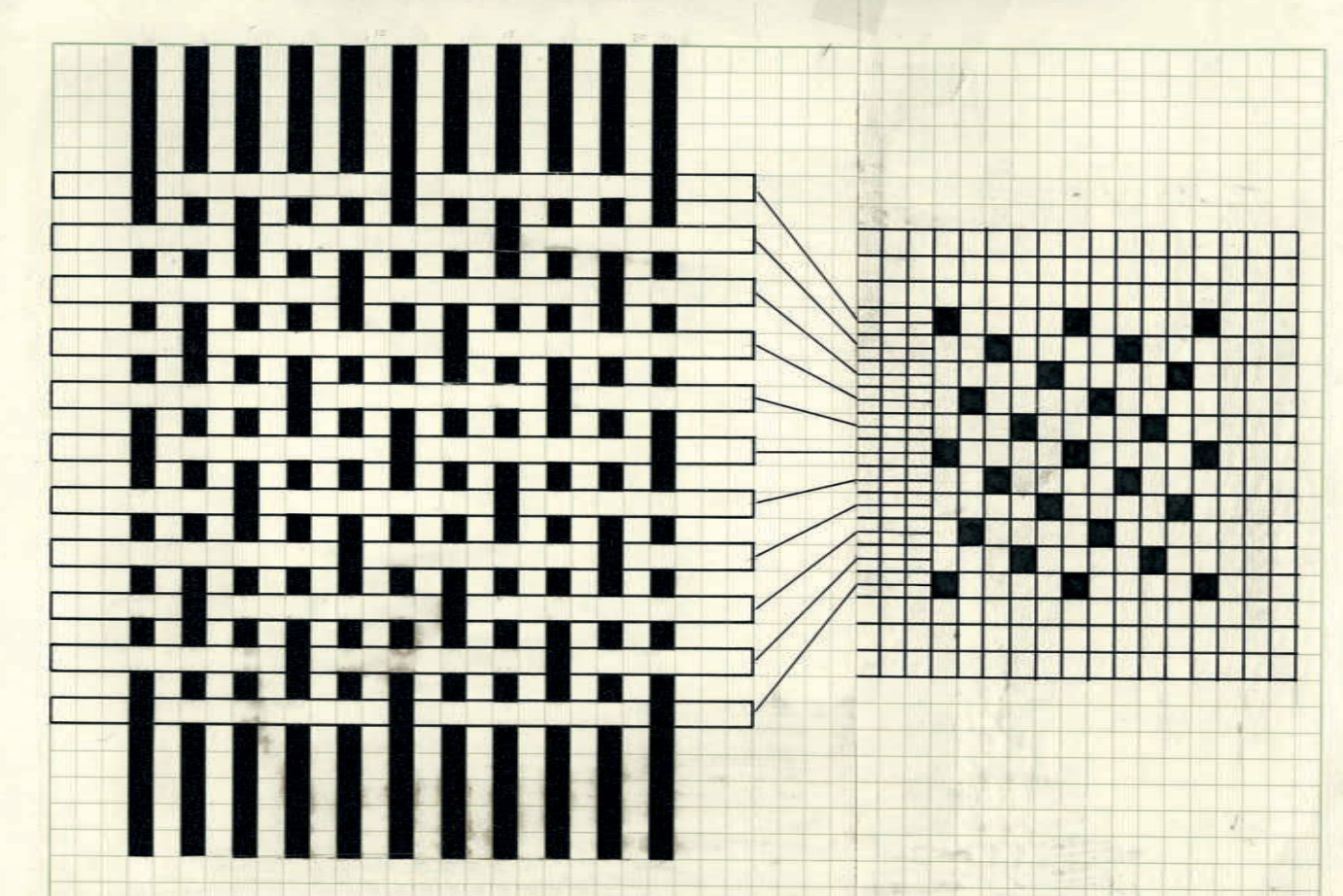The structure of a fabric or its weave — that is, the fastening of its elements of threads to each other — is as much a determining factor in its function as is the choice of the raw material. In fact, the interrelation of the two, the subtle play between them in supporting, impeding, or modifying each other’s characteristics, is the essence of weaving.
The fundamental constructions, in common with all fundamental processes, have a universal character and are used today, as they were in our early history, here and everywhere. They show the principle of textile construction clearly. With only a few exceptions, all other constructions are elaborations or combinations of the basic three: the plain weave, the twill, and the satin weave.
So begins Anni Albers' outline of woven textile constructions. Following Dehn's lead, we will approach each construction as grounds for applied mathematics. What are the elements of such constructions? How are elements within a construction related to each other? What properties distinguish one construction from another?

To be continued in class...
February 25, 2025
Weaving
Reading:
Weaving
Reading:
The Fundamental Constructions (Anni Albers)
Resources:
Draft Notation (Anni Albers)
Tablet Weaving Mechanics (Impending Looms)